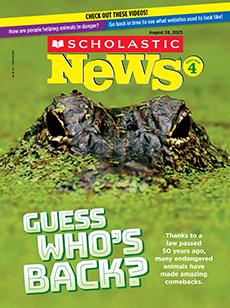The crowd looked up. It was 1922, and high above a New York airfield, a small airplane flew in a figure-eight-shaped path. Suddenly, the plane plunged downward. Seconds before it would have hit the ground, the plane swerved back up into the sky. The crowd chanted the pilot’s nickname: Brave Bessie.
Bessie Coleman was famous for her daring and dangerous aviation stunts. But she was more than a daredevil—she was a pioneer. Coleman was the first Black female licensed pilot in the United States.
The crowd looked up. It was 1922, and high above a New York airfield, a small airplane flew in a figure-eight-shaped path. Suddenly, the plane plunged downward. Seconds before it would have hit the ground, the plane swerved back up into the sky. The crowd chanted the pilot’s nickname: Brave Bessie.
Bessie Coleman was famous for her daring and dangerous aviation stunts. But she was more than a daredevil. She was a pioneer. Coleman was the first Black female licensed pilot in the United States.

